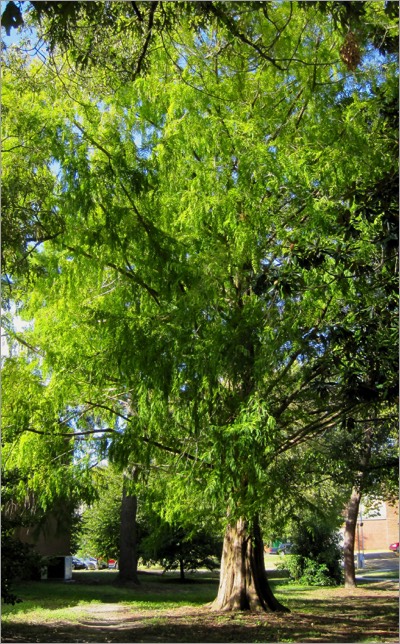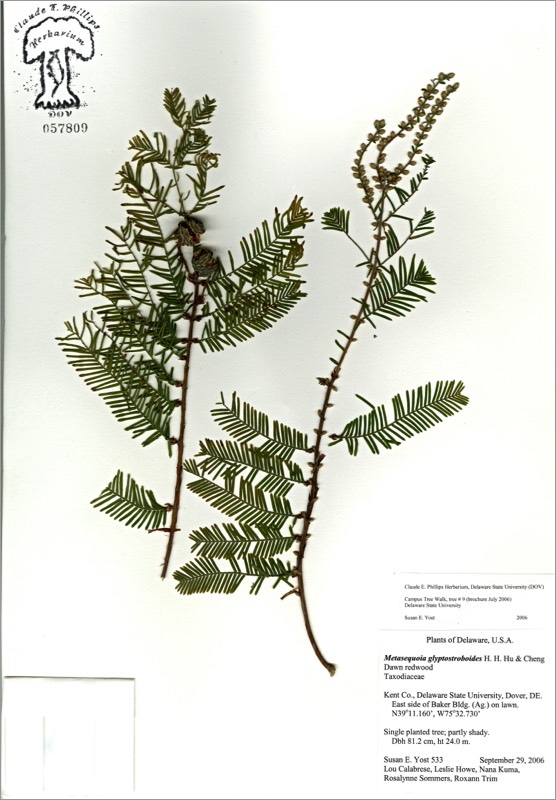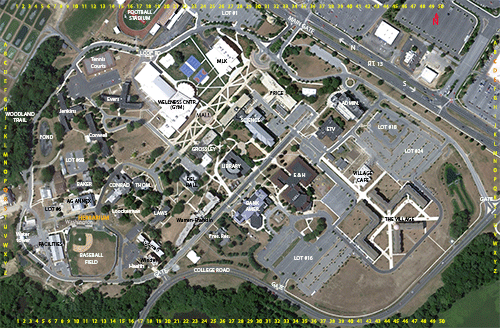*Metasequoia glyptostroboides


*Metasequoia glyptostroboides
DAWN-REDWOOD
Taxodiaceae
China
Location: map coordinates P-12 (east side of Baker Building), N 39°11'9'' W 75°32'43''
Planting history: planted by Dr. N. Dill, ca 1970. Source: Sears, Roebuck and Co. (probably Dover DE), $12.98.
Description:
*Non-native species (not native to Delaware)
DAWN-REDWOOD
Taxodiaceae
China
Location: map coordinates P-12 (east side of Baker Building), N 39°11'9'' W 75°32'43''
Planting history: planted by Dr. N. Dill, ca 1970. Source: Sears, Roebuck and Co. (probably Dover DE), $12.98.
Description:
- large deciduous tree, conifer. (Sheds leaves in winter; most other conifer species are evergreen)
- etymology: Metasequoia from Greek meta for changed, and Sequoia redwood tree, its relative; glyptostroboides = glyptostrobus-like (Glyptostrobus is a related Chinese genus)
- leaves short, flat, needle-like (ca 1/2“ long)
- needles and shoots opposite
- cones small, 2/3” wide, roundish, with peltate scales
- “living fossil”; one of the greatest discoveries of the 20th century: not known to science as a living tree until 1943, when it was found growing wild in a remote part of China (a fossil was already known); introduced to the West ca 1948
- popular ornamental (resembles bald cypress Taxodium distichum, a native tree, which differs in having an alternate arrangement of leaves and shoots; and different cones)
*Non-native species (not native to Delaware)


HIT REFRESH TO START LOCATION GRAPHIC